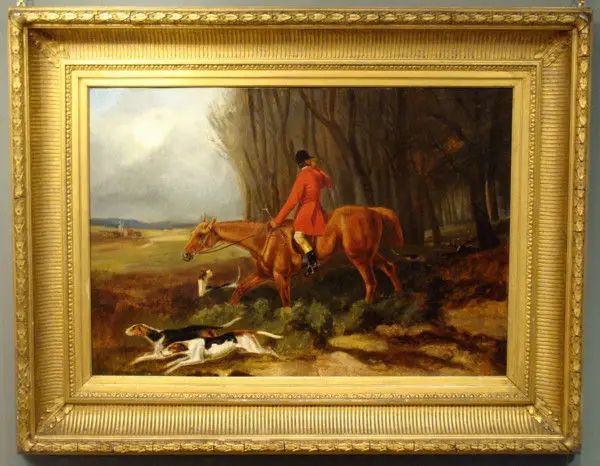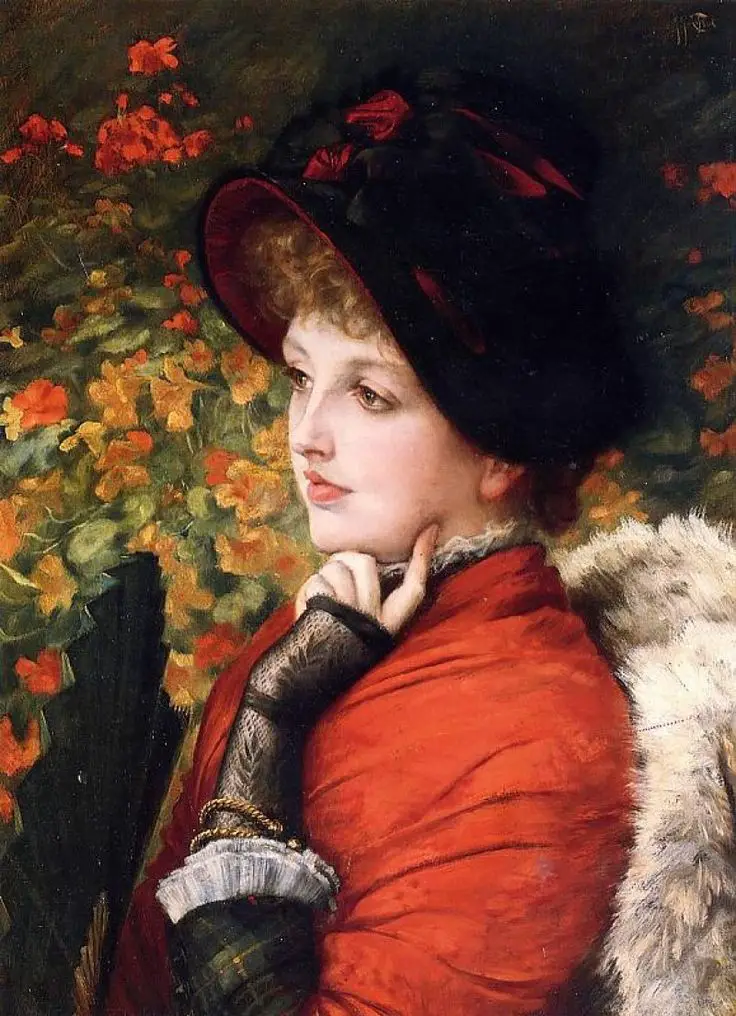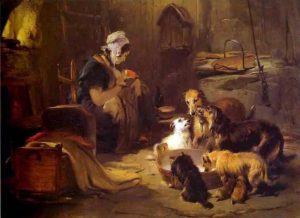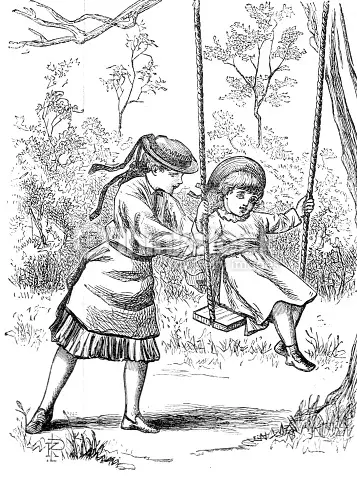1837 is the year of Queen Victoria’s accession to throne. Art societies had been in prominence since 1800 and further flourished in her reign. Some of the known societies were Society of British Artists, New Society of Painters. Royal Academy of Arts was one of the earliest institutions.
The types of art styles prevalent in Victorian times were watercolour, Pre-Raphaelite Brotherhood, aesthetic themes, subjects pertaining to love, lust, beauty, animals, classical revival, french influence on paintings, sculpture, engraving and etching.
Victorian Art Style: Oil and watercolour
Oil paintings were prevalent since times of the Renaissance. However, they are not abundant in Victorian times. It was primarily made on canvas. Production of paper laid the ground for watercolour paintings. Colour maps, portrait miniatures were seen in Middle Ages. the romantic watercolour style was noticed and so was stylistic brevity. Around 1831, Joseph Powell, James Fuge, William Taylor established a new society of their own after facing clashes with senior painters. The society evolved into Royal Institute of Painters in Water Colours.

Pre-Raphaelite Brotherhood
Formed by William Holman Hunt, John Everett Millais and Dante Gabriel Rossetti formed Pre-Raphaelite Brotherhood. It was inspired from scientific exhibitions. The aim was to choose subjects providing moral lessons. Victorian Age had seen changing dispositions towards religion hich led to discussions on subjects like geology, astronomy, biblical chronology.
In 1859, 38 female artists requested admission to Royal Academy. Later that year Laura Herford presented drawing which fit the bill, signed as A L Herford. She was accepted as 1st female student in 1860. Slade School of Fine Art, 1871 effectively enrolled female students.
Victorian Art Style: Aesthetic themes
Long depression of 1870 left economy of Britain in shambles. withdrawn from the conventions of narrating and lecturing, painting works intended for stylish interest instead of for their account or subject. Whistler criticized the Pre-Raphaelite fixation on exactness and authenticity, grumbling that their gathering of people had built up “the propensity for looking not at a painting, but rather through it”.
The painters of the tasteful development prided themselves on their separation from the real world, working from studios and once in a while blending with the public. Likewise, the subjects of their depictions were once in a while occupied with movement of any sort; human figures normally stand, sit or lie still, by and large with clear outward appearances
Victorian Art Style: Love, Lust, Beauty
By 1860, poetry and glamour was catching up among people and same was reflected in paintings too. Particularly Rossetti who engaged in paintings of women. Waning of religious faith aided perception of contemporary artists in regarding love as the most important subject.

Victorian Arts Style: Animal Painting
Selective breeding of dogs was taken up after profitability of drawings and paintings was realised; especially amidst wealthy British. Hunting, shooting, fishing were further promoted as pass time for the prize captured was depicted in art. Landseer (1802-1873) produced outstanding works of art of scenes, individuals, untamed life of Scotland etc.

Classical Revival
As the century advanced and the mix of automation, monetary decay, political turmoil and religious confidence made Britain an inexorably unsavory place in which to live, the populace progressively returned to look to pre-mechanical circumstances as a brilliant age. As a major aspect of this pattern, painters were attracted to pre-mechanical subjects and methods, art purchasers were especially attracted to specialists who could make associations between the present day and these glorified circumstances, for example, to the Middle Ages. works of art on medieval topics, especially Arthurian legend and religious subjects. painting distinctive times of the admired past; Lawrence Alma-Tadema painted scenes of Ancient Rome, previous Pre-Raphaelite John Everett Millais took to painting in the style of painters from the period promptly going before the Industrial Revolution, for example, Joshua Reynolds and Thomas Gainsborough, and Frederic Leighton represented considerable authority in very glorified scenes from Ancient Greece
French Influence on Victorian art style
The Franco-Prussian War of 1870 caused vast quantities of French specialists, for example, Claude Monet and Camille Pissarro to move to London, carrying with them new styles of painting. Country scenes, and pictures of ranchers and anglers and their families, turned into an exceedingly mainstream subject both in Britain and all through industrializing Europe. Art provinces started to open in areas thought especially beautiful, enabling craftsmen and understudies to work in the wide open and meet bona fide nation individuals, while still in the organization of similarly invested individuals.
Etching
The origin of Etching is said to be in France. Etching has been equated with legion-making. The etching artists come up with subjects of their own or reproduce previous artworks using etching needles. Seymoyer Haden and Whistler were the artists in Britain. Publications of Etchers Club (1844) was a matter of interest for few.Hamerton’s book ‘Etching and Etchers’ and periodical called “The Portfolio’ introduced the subject to laymen.

One can thus observe large variety merely in types of paintings in Victorian era. Sculpting, engraving, etching were other forms of art soon catching up. It is a matter of interest that such arts flourished and continued in times to come. They were inspired by the Renaissance but also witnessed changing times and thus variety of themes as reflected in the medium of art.